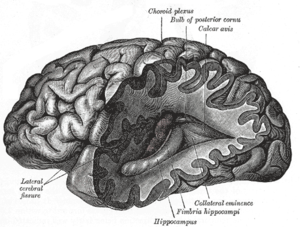A trial to pick up the presence of Parkinson's Disease using chemicals in exhaled air has launched in Cambridge.
Diagnoses of Parkinson's Disease are usually made on clinical grounds  following an examination by a medical specialist.
following an examination by a medical specialist.
The gold-standard is a brain biopsy or an autopsy, which are obviously inappropriate in the majority of cases. And because other conditions, which may require different medical management, can also present with similar symptoms to Parkinson's, doctors need a better non-invasive way to diagnose the disease.
Now, working with researchers in Israel, Cambridge neurologist Roger Barker and his colleagues are recruiting hundreds of Parkinson's patients, as well as healthy volunteers, to provide samples of exhaled breath for analysis.
This will build upon the results of a smaller preliminary study of about 60 patients, which suggested that the levels of certain chemicals present in the breath including 3-methylhexane, 2-pentanone and acetophenone, change significantly and reproducibly in patients with genuine Parkinson's Disease compared with healthy individuals or patients with other Parkinson's-like conditions.
Samples from the patients in the new study will be analysed using a detector system employing gold nanoparticles and carbon nanotubes that alter their electrical behaviour in a measurable way when the breath samples bind to them.
"Ultimately this will lead to better, non-invasive tests to discriminate a range of diseases, including Parkinson's," says Simon Stott one of the study investigators.
"At post mortem, one in ten people told during life that they had Parkinson's actually are found to have been suffering from a different neurological disease. We hope we can improve on that."
- Previous Automatic insulin
- Next Physics of popcorn










Comments
Add a comment